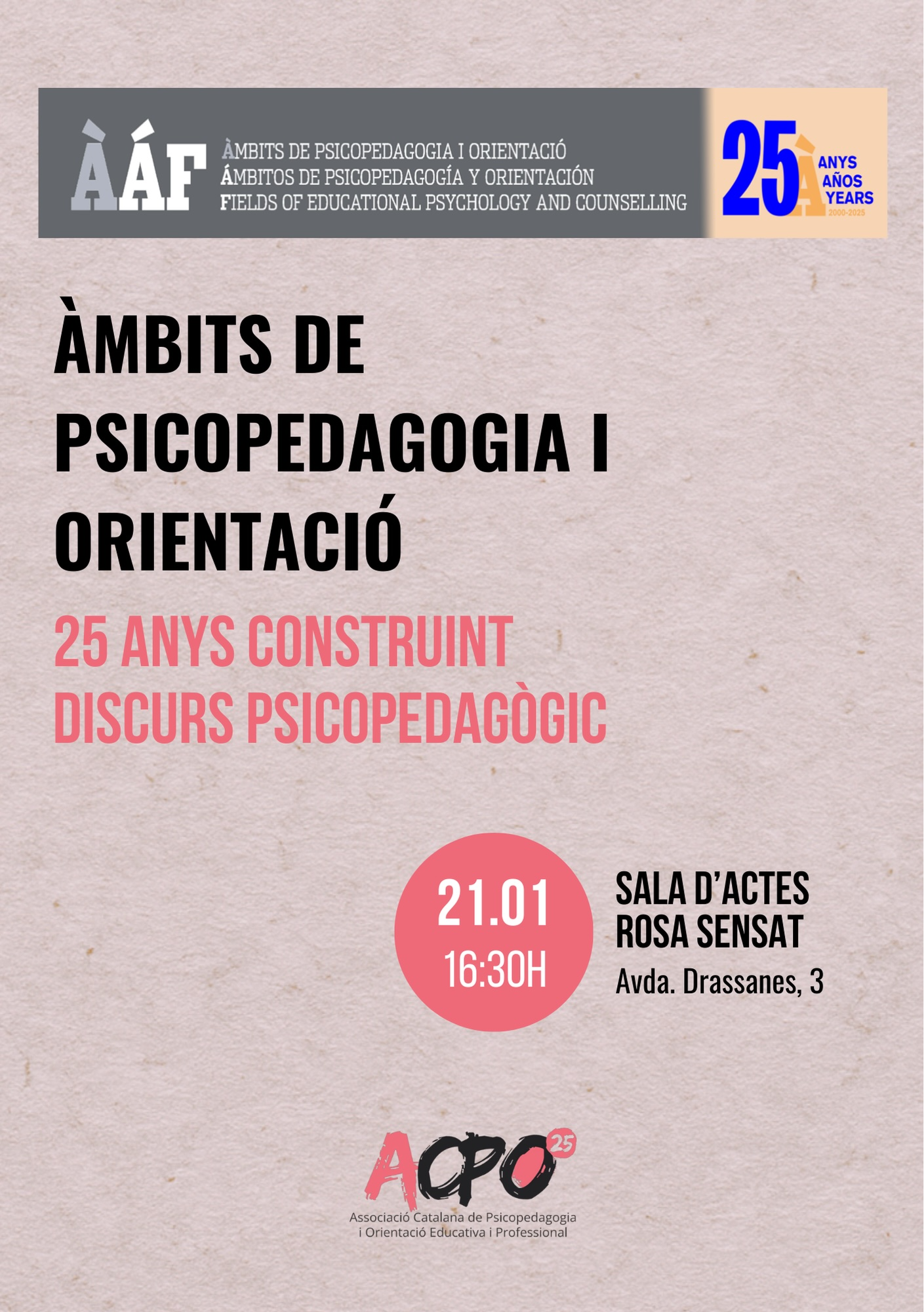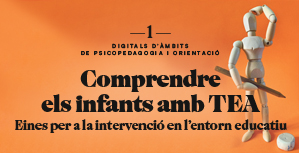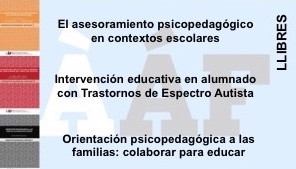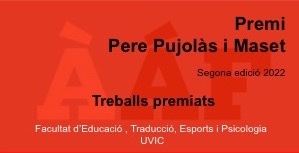La tríada de la inclusió
Resum
Aquest article descriu la introducció d'un programa d'inclusió per a nens i nenes amb autisme en una escola ordinària a la ciutat de Londres mitjançant un aula especialitzada de recursos denominada The Windmill. Basat en la Triad of Impairments o tríada de les dificultats desenvolupada per Lorna Wing fa més de 30 anys: Comunicació, Interacció Social i Imaginació; l'autor ens explica en primera persona la projecció positiva d'aquesta tríada en tres components essencials per al bon èxit del projecte: el treball especialitzat amb els alumnes, el suport als familiars i la col·laboració entre professionals. Aquest nou model triangular ho denomina “La Tríada de la Inclusió”. Seguint aquest esquema es descriuen les eines d'intervenció utilitzades al centre pilot i es donen pistes per a la possible creació d'un centre de suport amb les mateixes característiques.
Referències
Bondy, A.S. and Frost, L.A. (1994). The Picture Exchange Communication System. Focus on Autistic Behaviour, 9; (3), pp. 1- 19.
Boyd, B.A. (2002). Examining the relationship between stress and lack of social support in mothers of children with autism. Autism, 17; (4), pp. 208-215.
Carpenter, B., Ashdown, R. and Bovair, K. (Eds.) (2001). Enabling Access. Effective teaching and learning for pupils with learning difficulties, London: David Fulton.
Charman, T., Pellicano, L., Peacey, L.V., Peacey, N., Forward, K. and Dockrell, J. (2011). What is Good Practice in Autism Education?, London: AET.
Cox, A.J. (2006). Boys of few words: Raising our sons to communicate and connect, Guilford Press.
del Rio, M. J. (Ed.) (1997) Lenguaje y comunicación en personas con necesidades especiales, Barcelona, Martínez-Roca.
Gallego Ruiz & Gallego Ortega (1995) Manual de logopedia escolar, Málaga, Ediciones Aljibe.
Gray, C. and Garand, J. D. (1993). Social stories: Improving responses of students with autism with accurate social information. Focus on Autistic Behaviour, 8; (1), pp. 1-10.
Irish Primary Principals’ Network (2008). Autism provision setting up new units, Glounthaune Co Cork: IPPN.
Janice, E. and Janzen, M.A. (1999). Autism, facts and strategies for parents. Therapy Skill Builders, 100, pp 92.
Jones, G. (2002). Educational provision for children with autism and Asperger syndrome: meeting their needs, London: David Fulton.
Jones, G., Meldrum, E. and Newson, E. (1993). A descriptive and comparative study of interventions for children with autism: Summary report. Birmingham: University of Birmingham.
Jones, G., English A., Guldberg K., Jordan, R., Richardson, P. and Waltz, M. (2008). Educational provision for children and young people on the autism spectrum living in England: A review of current practice, issues and challenges, London: Autism Education Trust.
Jordan, R. (2011). Social and emotional understanding, unit 2, Special Educational Needs of Children with Autism module, DE course Children with Autism, School of Education, The University of Birmingham.
Jordan, R. (2008). Autism spectrum disorders: a challenge and a model for inclusion in education. British Journal of Special Education, 35; (1), pp. 11-15.
Jordan, R. (2001). Autism with severe learning difficulties, London: Souvenir Press.
Lambe, J. and Bones, R. (2006). Student teachers’ attitudes to inclusion: implications for Initial Teacher Education in Northern Ireland. International Journal of Inclusive Education, 10; (6), pp. 511-527.
Matson, J.L., Matson, M.L. and Rivet, T.T. (2007). Social-skills treatments for children with autism spectrum disorders: An overview. Behaviour Modification, 31; (5), pp. 682-707.
Mesibov, G., Schopler, E. and Shea, V. (2004). The TEACCH Approach to Autism Spectrum Disorders, New York: Springer.
Rafferty, Y. (2001). Benefits and risks of reverse inclusion for preschoolers with and without disabilities: Parents’ perspectives. Journal of Early Intervention, 24; (4), pp. 266-286.
Schopler, E. and Mesibov, G. (1983). Social behaviour in autism, London: Plenum.
Simoni, E. (2010). http://EzineArticles.com/4970120 (Accessed 15 November 2011).
Smith, C.M., Rogers, S.J. and Dawson, G. (2008). The Early Start Denver Model: A comprehensive early intervention approach for toddlers with autism, in J.S. Handleman and S.L. Harris (Eds). Preschool Education Programs for Children with Autism.
Walker, M. (1973). An experimental evaluation of the success of a system of communication for the deaf mentally handicapped. (Unpublished MSc thesis available for reference from author or from following libraries: RNID, Gower Street, London; The Hilliard Collection, John Ryland's Library Manchester University),
Whitaker, P. Barratt, P., Helen, J., Potter, M. and Thomas, G. (1998). Children with autism and peer group support: "Using circles of friends". British Journal of Special Education, 25 ; (2), pp. 60-64.
Wing, L. (1995). Autistic Spectrum Disorders: an aid to diagnosis, London: The National Autistic Society.
Wing, L. and Gould, J. (1979). Severe impairments of social interaction and associated abnormalities in children: Epidemiology and classification. Journal of Autism and Developmental Disorders, 9, pp. 11-29.
Descàrregues
Publicades
Número
Secció
Llicència
Els autors/ores conserven els drets d'autor i concedeixen a la revista el dret de primera publicació de l'obra, registrada sota una llicència Creative Commons Reconeixement-NoComercial-Sense Obra Derivada. Aquesta llicència permet la descàrrega de les obres, i que es puguin compartir amb altres sempre que se’n reconegui l'autoria, però no permet que siguin modificades de cap manera, ni ser utilitzades amb finalitat comercial.

















